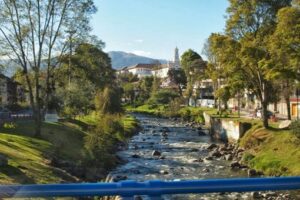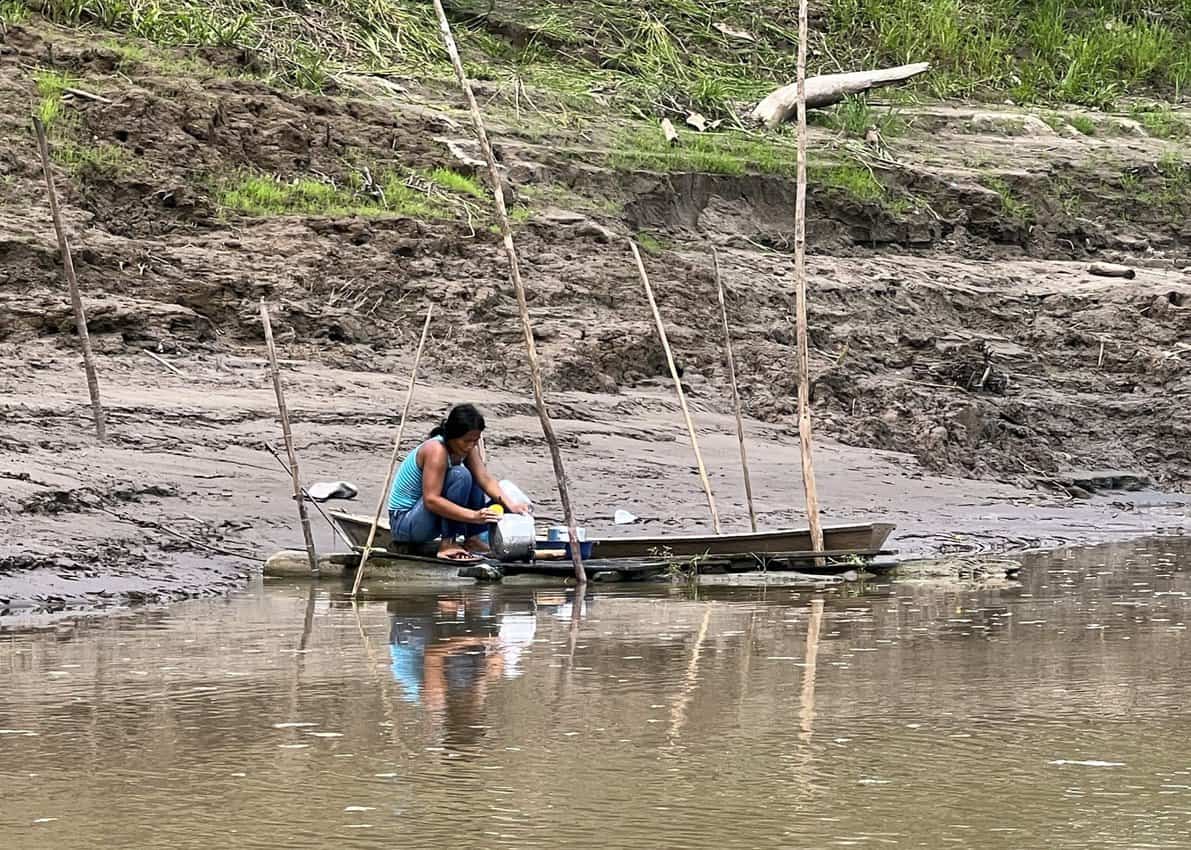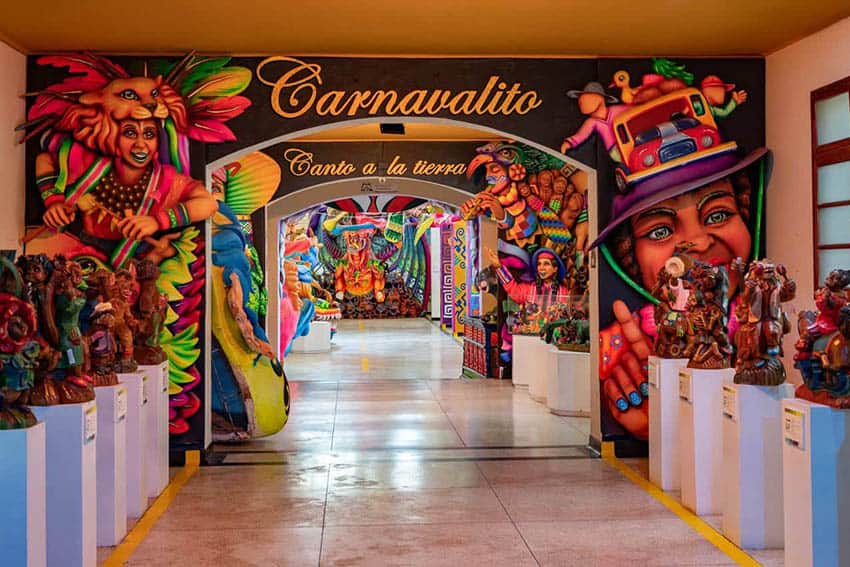
Cartagena de Indias, a City of the Senses
By Anna Gerwel
“I must say that I completed my education as a writer in Cartagena”. Gabriel Garcia Márquez
Can one fall in love with a city, its’ culture and people? Upon arriving in Cartagena de Indias, a UNESCO World Heritage site, on the Caribbean coast of Colombia, we sensed we arrived not only in a different country but in a distant world… We were mesmerized by its colonial past, pirate legends and the ever present spirit of Gabriel Garcia Márquez.
Our hotel, Sofitel Santa Clara, set in the historical walled city of Cartagena, was built in 1621, originally as a Clarisan Convent. It was funded by a donation on behalf of Catalina de Cabrera. Women who became nuns spent their entire lives in the convent.
The convent was eventually closed down, becoming a penitentiary and, after some time, a hospital. It closed its doors due to negligence in infrastructure and the building lay abandoned for seventeen years.
The restoration began in 1991 and in 1995 a beautiful hotel welcomed its first visitors. Architects brought to light its countless treasures, such as wells, crypts, confessional booths and decorative ceramics.
The hotel was built in Spanish Colonial style. As we entered the courtyard, we were immersed in a lush tropical garden, palm trees, stunning arches and colonnades, and Fernando Botero’s iconic sculpture. We had our first dinner at a gourmet restaurant “1621” in the center of the garden.
This is the finest and priciest hotel in a city full of fantastic hotels–a striking example of a converted historic building providing a true luxury. experience.
As we sat down at the candlelit tables, surrounded by the sounds of the night…tree frogs and exotic birds…the atmosphere took us far away to the past when the nuns lived in the convent, attended daily mass, baked, tended garden and studied in the enclosed space.
Slaves, Pirates, and Viceroys
Their spirits were felt that night along with those of the African slaves, pirates and the Spanish viceroys who used to inhabit this world. The candle lighting ceremony took place every evening in the main courtyard of the hotel to the sounds of Gregorian chants.
Following our dinner, we took a traditional horse-drawn carriage through narrow streets of the town. We rode along brightly colored houses built in Spanish colonial style with balconies adorned by bougainvilleas in all shades of pink.
Colombia exports more fresh flowers than any other country in the world except Holland. I could not believe the beauty of orchids and birds of paradise decorating most hotels and some restaurants. They say if you send mere roses to a woman here they will sniff, and think you’re cheap, since they cost less than $2 a dozen. No, here it’s orchids or nothing!
A mime suddenly sprang up onto our carriage mimicking us and the passerbys. He was swiftly gone leaving yet another taste of fantasy in our imagination.
Our friendly guide pointed out the major plazas museums and restaurants we were passing, addressing us in Spanish, which we slowly began to understand, thanks to his richly exaggerated hand gestures.
This was a wonderful town overview. The plazas and cafes were bustling with life: laughter, street vendors and music. Afro-Colombian women “Palenqueras”, dressed in traditional Colombian outfits, sold tropical fruit: mangoes, cantaloupes and watermelons.
They also enjoyed posing for photographs with curious passersby. Street vendors offered hats, paintings, sculptures, jewelry, brightly colored bags, shirts and beautifully woven hammocks.
I loved the town’s plazas with their open-air restaurants, cafes and countless sculptures. La Gertrudis, another work of famous Master Fernando Botero, adorns Plaza San Domingo.
Cartagena also has a wonderful sandy three kilometer Playa Blanca, or white sand beach. It’s accessible by both speedboat and by land via taxi. Visit this website for more information.

Monastery of San Domingo
This square is perhaps best known for the outdoor dining and the imposing Monastery of San Domingo with the crooked tower ‘twisted by the devil himself’ according to one of the local legends.
Other squares worth a visit include Los Coches Square, where, in ancient times, the slave market was being held and the Bolivar Park, featuring Gold Museum and the Palace of Inquisition thus offering a further glimpse into Colombia’s complex and rich history.
It was wonderful to watch people pass by, local Cartagenians lively discussing daily affairs and tourists wondering around squares and on narrow streets.
The city’s vast 11-kilometer wall provides a wonderful place to walk with a view of the ocean. The city feels safe even at 11 pm when many people can still be seen strolling atop the wall and on the narrow streets.
Plaza San Domingo is often visited by comedians, musicians, and mimes. After a while, a few street vendors approached us, one selling leather purses easily convertible into wallets.
He bargained with mastery, charm, and smile, asking us where we are from and how we are enjoying his town. We did not buy the purse, yet from then on we were greeted by him as we saw him in town during the following days.
Guitar players often serenaded diners playing romantic songs, mainly Cuban, Colombian and Spanish. In the evenings we were constantly surrounded by music.
Live bands play Salsa, Cumbia and Merengue at local restaurants most nights of the week. We danced even in small places, between tables. The atmosphere in Cartagena is relaxed and laid back as though time stood still.
Reggae Rhythms
We enjoyed Reggae and African rhythms along with jazz and romantic Spanish guitar in El Coro, our hotel bar. Cartagena offers a variety of cuisines: Colombian, Spanish, Peruvian, Italian, Argentinian and French among others. Local dishes are fresh and simply delicious.
We sampled tasty paella, different types of fish, empanadas, shredded beef with fried plantains, chunchullos and arrepas de queso. Cartagena is famous for its seafood.
One of the most meaningful spiritual aspects of Cartagena is the relationship of Gabriel Garcia Márquez, the greatest Colombian novelist, to the city. “All of my books have loose threads of Cartagena in them.
And, with time, when I have to call up memories, I always bring back an incident from Cartagena, a place in Cartagena, a character in Cartagena”, as the famed author noted in a documentary. Gabi, as he was affectionately known, was awarded Nobel Prize for literature in 1982.
His most significant work, One Hundred Years of Solitude, written in the style of, magical realism captivated the world. His stories and their characters are woven from childhood memories.
As a child, the writer lived in Aracataca with his maternal grandparents, both excellent storytellers. His grandmother was ‘the source of the magical, superstitious and supernatural view of reality’ and he described his grandfather as ‘his umbilical cord with history and reality.’
Both of his complex romantic novels, Love in the Time of Cholera and Of Love and Other Demons took place in Cartagena.
A self guided tour through the city highlights places the author described in his novels, a bench where Florentino Ariza longingly awaited Fermina Daza to pass by, the scribe arches where he composed love letters, the crypt where the author found a skeleton of a girl with ‘twenty meters long beautiful red hair’, giving the beginning to the story of Sierva Maria.
I was mesmerized by his novel ‘Of Love and the Other Demons,’ most of which took place in our hotel during the time when it was a convent. It was the very place where Sierva Maria was imprisoned and where Father Cayetano fell hopelessly in love with her.
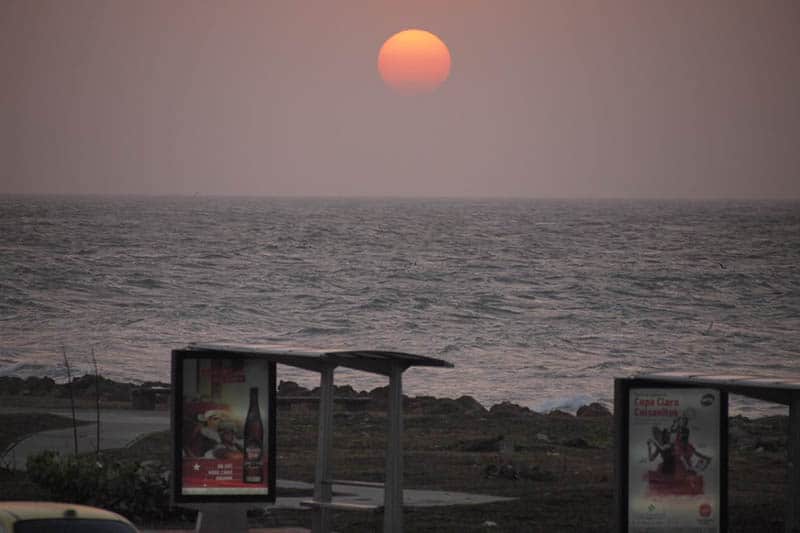
Gabriel Garcia Marquez
Gabriel Garcia Marquez lived and worked as a journalist in Cartagena in 1940s. He was mesmerized with the melange of cultures in the city, its squalor as well as its charm. Cartagena provided an endless source of inspiration.
Many years later the writer bought a house where until recently, he came on annual visits from Mexico City. He was known to have a drink at the Sofitel.
His favorite restaurant in town, called La Vitrola, offers traditional Colombian and Cuban cuisine to the accompaniment of an Afro-Cuban band.
A truly touching place to visit is San Pedro Claver Sanctuary and church. San Pedro de Claver, born in Spain, arrived in Cartagena in 1610 as a young Jesuit priest.
At the time of his arrival, slavery was established for about a century. Approximately 10,000 slaves arrived in Cartagena annually. The young priest took care of the slaves as soon as they arrived at the wharf. He provided them with medicine and food trying to ease their hardships.
Claver baptized hundreds of slaves, fighting for their human rights as fellow Christians. His mission often met with disapproval of priests and slave owners. Pope Leo XIII recognized his lifelong dedication and noble deeds canonizing him in 1888.
Cartagena is filled with magic and fantasy. It is a surreal place, ideal for those who enjoy escaping into imagination, into the world of the past, the world of the spirits. One can stroll through its streets and be in the present or live in the past, among the characters of Gabriel Garcia Marquez novels, experiencing their emotions and longings.
Visiting Cartagena surpassed all of our dreams.
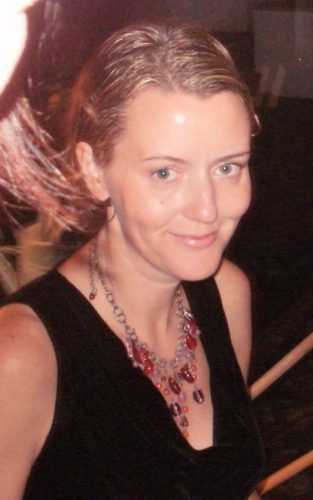
Anna Gerwell loves exploring global cultures and expressing her passion through writing and painting. She was born in Poland and grew up in Libya, Tunisia, and Italy. She is fascinated by connections among people based on art, music, food, fashion, and history.
- These 9 U.S. National Parks Require Reservations in 2024 - April 17, 2024
- Take a Hike in Olympic National Park - April 17, 2024
- The Wild Mississippi: 2340 Miles Across Ten States - April 8, 2024


